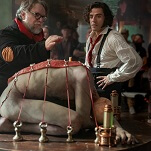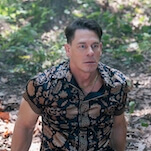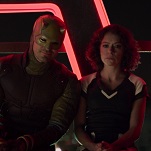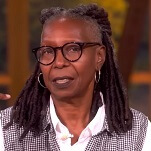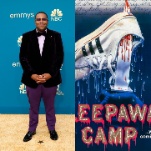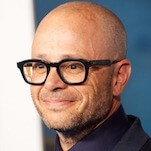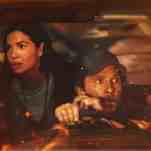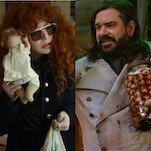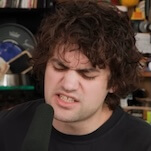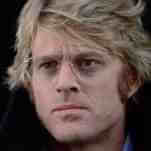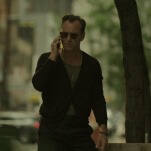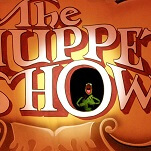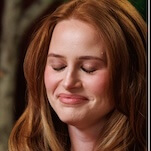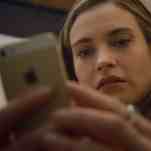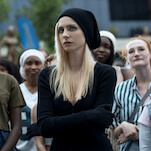The opening sequence of Tobe Hooper’s 1981 gem The Funhouse riffs on Psycho by way of Halloween: The buxom heroine disrobes and steps into the shower while an unseen stalker, tracked via first-person killer-cam, slips on a scary mask, grabs a blade, and heads into the bathroom after her. It’s all a big fake-out—the knife is plastic and the stalker is her horror-obsessed little brother—but like the similar sorority-house opening to Brian De Palma’s Blow Out, it announces an intention to comment on the genre as much as deliver on it. With the slasher trend in full effect, Hooper and his screenwriter, Larry Block, pulled off a clever end-around by packaging a loving homage to Universal monster movies in the guise of a teen-gutting slasher movie. They tick off the checklist of requisite elements (horny kids, a virginal Final Girl, jump scares, and gross deaths) while fetishizing classic movies, carnie culture, and the creation of the film’s demented monster.
Later cast as Mozart’s wife in Amadeus, Elizabeth Berridge was an unknown when she played the female lead in The Funhouse, and she has a mix of doe-like innocence and pesky resilience that recalls Jessica Harper in Suspiria. Defying her father’s orders to not date bad boy Cooper Huckabee and not go to the sketchy carnival that’s breezing through town, Berridge double dates with her more sexually experienced (i.e. doomed) best friend (Largo Woodruff) and her boyfriend (Miles Chapin). After winning some stuffed animals and checking out the two-headed cow and other freaks, the four go through on a dare to spend the night hiding out in the spooky carnival funhouse. This already-terrible idea gets worse when they witness a murder being committed by a grotesquely deformed killer and find themselves on the run from this monster and a carnival barker, played by Kevin Conway.
Shot in widescreen by Andrew Laszlo, who was the cinematographer on Walter Hill’s The Warriors two years earlier, The Funhouse has a saturated color palette that brings out the lurid menace of the carnival setting, with its rickety attractions and desultory magic and strip shows. The entire operation seems like a dare even before Berridge and her friends decide to play squatters in the funhouse. Hooper doesn’t entirely escape the rote business of semi-regular mutilations and impalings, but The Funhouse succeeds in updating a monster from the Universal pantheon and setting it loose in the type of traveling death trap that’s been haunting small towns forever. Step right up…
Key features: A commentary track with Hooper, moderated by an infectiously enthusiastic Tim Sullivan (2001 Maniacs, Driftwood), highlights a package that also includes new interviews with executive producer Mark L. Lester and composer John Beal as well as a battery of trailers and TV spots.

